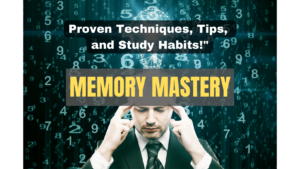You know that feeling when you’ve spent the entire day putting off your studies, and now you’re faced with a mountain of work and an overwhelming sense of guilt? We’ve all been there, but fear not! Today, I’m going to share with you some awesome tips to get back on track and make the most of your remaining time. So grab a pen, a notebook, and let’s dive right in!
Before we jump into the strategies, picture this: you’re on your couch, binge-watching your favorite TV series, and suddenly you glance at the clock. Panic sets in as you realize you’ve wasted the entire day! What if I told you that you could still turn this day around and get some serious studying done? Stick around to discover how you can bounce back and make the most of your time!
IDEA 1: ACKNOWLEDGE YOUR PROCRASTINATION AND REFRAME YOUR MINDSET
First things first, let’s address the elephant in the room – your procrastination. It’s crucial to acknowledge that you’ve put off your work, but don’t beat yourself up over it. Remember, you’re human and everyone procrastinates from time to time.
So now that you’ve accepted your procrastination, it’s time to reframe your mindset. Instead of feeling guilty and overwhelmed, focus on the time you have left. Ask yourself, “What can I realistically accomplish in the remaining hours?” Break down your tasks into smaller, more manageable chunks, and prioritize the most important ones.
Host: When you shift your perspective from the time you’ve lost to the time you have left, you’ll feel more motivated and in control. Keep in mind that it’s not about the hours you’ve wasted, but the progress you can make from now on.
Host: A helpful trick to maintain this positive mindset is to visualize yourself successfully completing your tasks. Imagine how proud and relieved you’ll feel once you’ve conquered your to-do list. This mental image can serve as a powerful motivator to kickstart your productivity.
IDEA 2: ELIMINATE DISTRACTIONS AND CREATE A PRODUCTIVE STUDY SPACE
Host: Alright, you’ve acknowledged your procrastination and reframed your mindset. Now, let’s tackle your environment. It’s essential to create a study space free of distractions to make the most of your remaining time.
Host: Begin by eliminating anything that might divert your attention from your work. Put away your phone, close unnecessary tabs on your computer, and clear your workspace of any unrelated items. Remember, out of sight, out of mind!
Host: Once you’ve removed distractions, optimize your study area for productivity. Choose a comfortable chair, ensure adequate lighting, and have all necessary materials within reach. These small changes will make a big difference in keeping you focused and engaged.
Host: Don’t forget to consider noise levels as well. If you prefer a quiet environment, try using noise-canceling headphones or earplugs. Alternatively, if you concentrate better with some background noise, listen to instrumental music or white noise to help you stay on track.
IDEA 3: BREAK YOUR STUDY SESSIONS INTO SHORT, FOCUSED INTERVALS
Host: Now that your environment is set up for success, let’s discuss an effective study technique: the Pomodoro Technique. This method involves breaking your study sessions into short, focused intervals (typically 25 minutes), followed by a brief break.
Host: To implement the Pomodoro Technique, set a timer for 25 minutes and commit to studying without interruption. Once the timer goes off,
reward yourself with a 5-minute break to stretch, grab a snack, or simply relax. After completing four Pomodoro intervals, take a longer break (15-30 minutes) to recharge your mental batteries.
Host: This technique not only helps you maintain focus and productivity but also prevents burnout. By working in short, intense bursts, you’ll find it easier to stay engaged and retain information more effectively.
Host: Another advantage of the Pomodoro Technique is that it fosters a sense of urgency. With a ticking timer, you’ll feel more motivated to complete tasks within the allotted time. As you continue with this technique, you’ll become more efficient at managing your time and may even find yourself completing tasks ahead of schedule.
Host: Finally, don’t forget to track your progress during each interval. Record which tasks you’ve completed and how long they took. This way, you’ll be able to adjust your study plan accordingly and better allocate your time for future sessions.
IDEA 4: UTILIZE ACTIVE STUDY STRATEGIES AND MONITOR YOUR PROGRESS
Host: Last but not least, let’s talk about active study strategies. Passive studying, like re-reading your notes or textbooks, won’t cut it when you’re short on time. Instead, engage with the material using techniques like the Feynman Technique, self-quizzing, or teaching someone else.
Host: The Feynman Technique involves explaining a concept in your own words as if you were teaching it to someone else. This process helps identify gaps in your understanding and reinforces your knowledge. You can even use this method by talking to yourself or writing down your explanation.
Host: Self-quizzing is another effective technique that promotes active learning. Create flashcards, answer practice questions, or use online quiz platforms to test your knowledge. This method keeps you engaged, helps you retain information, and provides valuable feedback on areas that need improvement.
Host: Teaching someone else, like a friend or family member, is another powerful study method. Explaining concepts to others requires a deep understanding of the material and reinforces your learning in the process.
Host: As you implement these active study strategies, continuously monitor your progress. Reflect on which techniques work best for you and adjust your approach accordingly. By fine-tuning your study methods, you’ll maximize your productivity and learning outcomes.
CONCLUSION
Host: And there you have it! Four powerful strategies to help you start studying after procrastinating the whole day. Remember, it’s never too late to turn your day around and make progress on your to-do list. Acknowledge your procrastination, reframe your mindset, eliminate distractions, break your study sessions into focused intervals, and utilize active study techniques. With these tips in mind, you’ll be well on your way to conquering your studies and overcoming procrastination once and for all.



